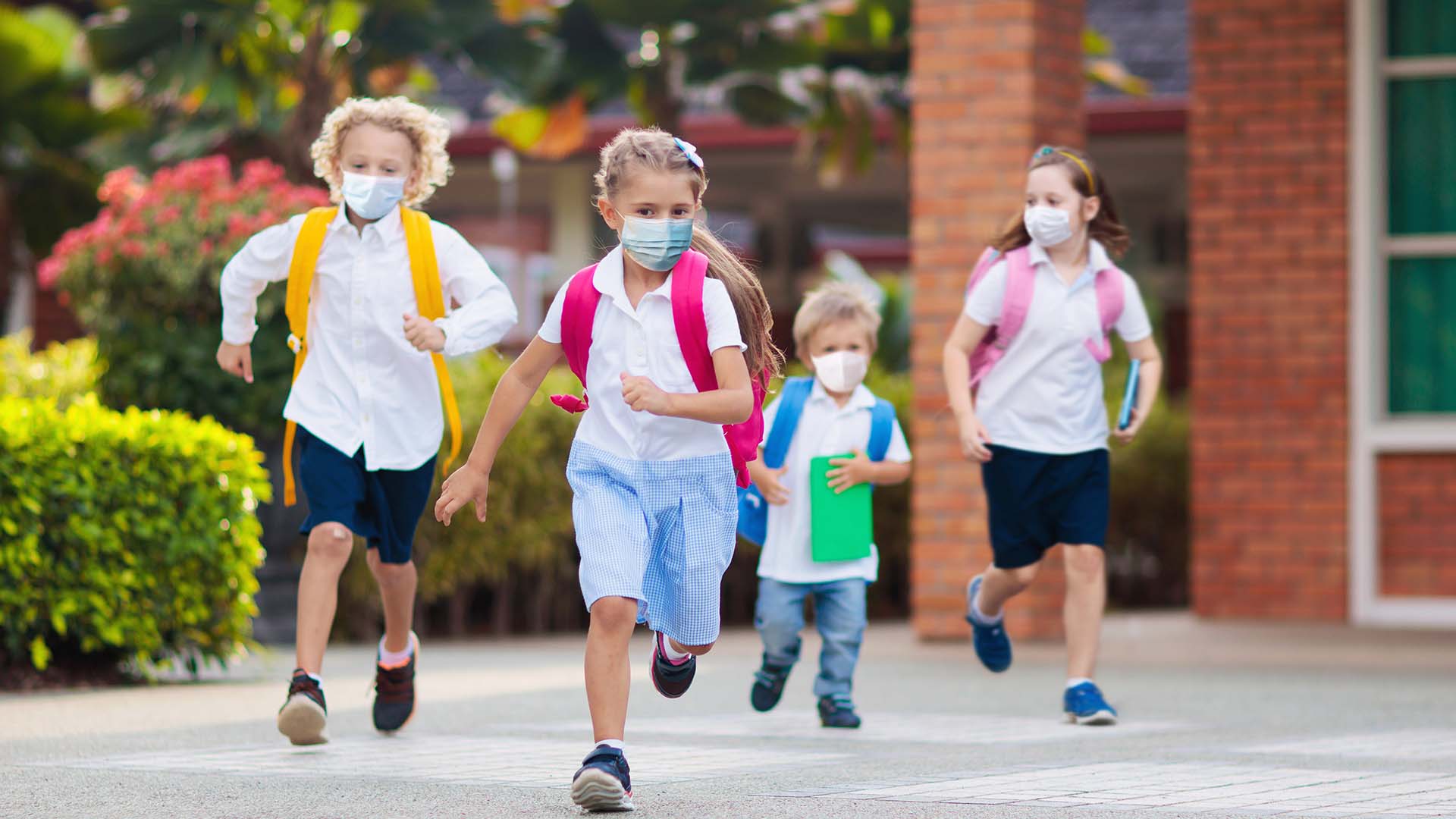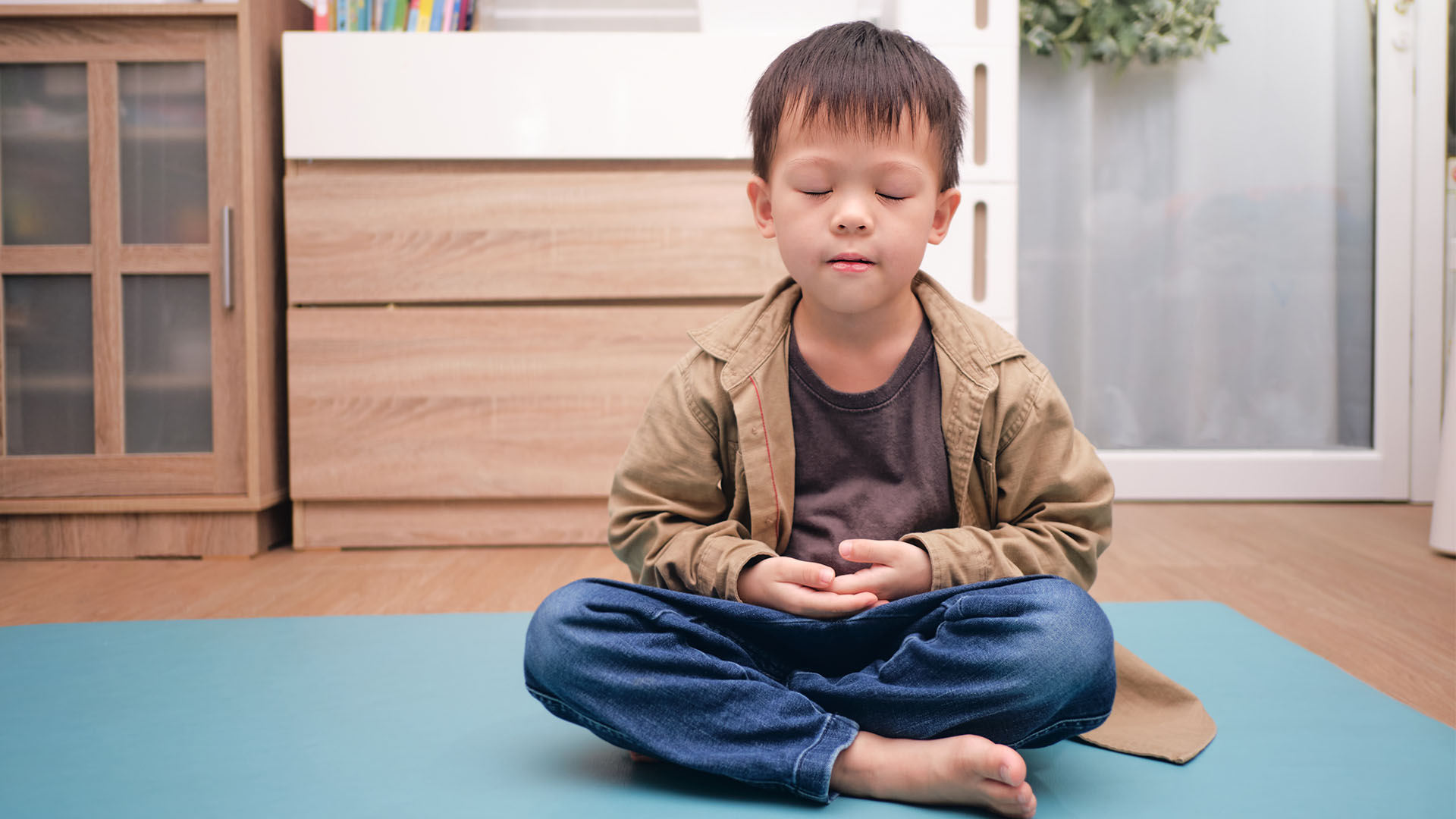From lockdown to meltdown
Navigating children’s post-pandemic anxiety
The COVID-19 pandemic has left a lasting effect on many Australian families. According to various studies, during the most recent lockdown, at least 1 in 4 parents reported feeling stressed and overwhelmed, and up to 12 per cent of kids experienced “very high levels of mental health difficulties”. Anxiety was most common, and there was a marked increase in depression symptoms and attachment-seeking behaviours.
“When you think about the impact of trauma, and COVID-19 can be classified as a potential cause of trauma for children, we need to understand that it’s is not only the particular event but our personal experience of it that can be traumatic,” explains Associate Professor Cathrine Neilsen-Hewett, Director of Pedagogical Leadership at Early Start and Academic Director of the Early Years at the University of Wollongong (UOW).

“For some children, the recent lockdown may not have been such a bad experience. Maybe they connected more with their parents who used to work in the office and now stayed at home. But if COVID-19 had resulted in significant disruptions in relationships and home environment, children could have ended up heavily dysregulated,” Professor Neilsen-Hewett adds.
“Self-regulation is a person’s ability to regulate their emotions, behaviours and thoughts in response to situational demands. So, in essence, it’s being able to stop doing whatever you want to keep doing and start doing something you don’t. And before the age of three, children’s self-regulation depends on us, adults.”
Indeed, a human baby’s brain is a fascinating organ. It is born neurologically and cognitively undeveloped and uses as much as 60 per cent of the infant’s metabolic energy to grow. Between birth and age three, children’s brains develop at the fastest rate in their whole human lifespan. By three, they have close to 1000 trillion connections between neurons. At the same time, their prefrontal cortex – responsible for higher cognitive functions such as memory, emotions, impulse control and problem-solving – become fully operational only around the ripe age of 23.

Back to school
Over the past two years, on-off lockdowns and changing regulations have forced us all into living under a cloud of emotional and social uncertainty. October is a month of further change. It marks the reopening of the state after the 13-week lockdown, the gradual loosening of all restrictions, opening of the borders – and finally – return to in-person learning.
Among both parents and children, there can be many mixed feelings about going back to school. On the one hand, there’s an excitement about seeing friends and teachers. On the other, the transition to more rigid, on-site schooling can feel daunting to some kids. Even though in-person learning is usually best for their physical and mental health, it could take a while for children to adapt back.
UOW’s early education expert, Professor Neilsen-Hewett, explains that every behaviour, whether good or bad, is a window into our children’s emotions.
“Young children are resilient, but developmentally, they may lack the brain capacity to self-regulate, which makes them particularly vulnerable to change and uncertainty. This, in turn, impacts their self-regulatory capabilities, resulting in tantrums, power struggles and general anxiety,” she adds.
So how to keep children within their windows of tolerance and bring them back at times of stress? Here are a few practical tips:
Self-regulate to co-regulate
One of the powerful techniques is simply learning to stay calm during our kids’ emotional storms. In a way, we’re the pilots, and they are the passengers on this journey.
Professor Neilsen-Hewett mentions that no one can self-regulate when in a heightened emotional state because they are outside the window of functionality. Our primary role as parents is to figure out our kids’ patterns – why and when they may become dysregulated, and find what works to bring them back to balance. Is it physical output like exercise? Is it an emotional connection? Or is it giving them space?
“Whatever you do, meet your child with empathy and love. Because your ability to calm them hinges on the effectiveness of your relationship. Children are much more likely to respond well when there’s trust and a sense of reciprocity,” Professor Neilsen-Hewett says.
Flex their self-regulation muscle
One of the underpinnings of self-regulation is the human ability to problem-solve. So as parents, we are responsible for helping our kids build these coping mechanisms. How do we do that? Nothing works better than giving your child some dose of control over their life. We can do it by offering simple choices for safe decisions – what to wear, eat or play with. It helps children to develop and practice skills that are important for self-regulation.
Secondly, we need to help them stretch in their areas of concern. If they are unable to wait their turn, at first, we may only expect them to do so for a few seconds. A few times later, we may extend that time to a few minutes. “It’s a gradual scaffolding that will help them thrive in social situations later in life,” explains Professor Neilsen-Hewett.
Simplify your life and be present
Do whatever you can to be available to your child during the challenging times of transition and change. For example, if you feel that going back to school may be emotional and stressful for your child, try to be more present around that time by offering some special one-on-one time with them.
Simplifying your family life is beneficial as it allows you to focus on your child’s needs. Think: fewer group classes and playdates, more quiet chats and intimate family adventures. Keeping some form of a routine also helps – it feels good to cling to something as consistent and predictable as a daily walk or a regular bath time.

Just breathe
Breathing is one of the simplest and most powerful relaxation techniques. It fosters connection while calming the body and mind. Younger children can practise the 3/5 breathing method. It means breathing in for the count of 3 and breathing out for 5. “The longer out-breath triggers the parasympathetic response, which calms the body,” says Professor Neilsen-Hewett.
We can make the exercise more fun by imagining to blow bubbles or practising ‘hot chocolate breath’ (smelling hot chocolate through the nose and cooling the drink by gently blowing out). Another simple ritual is doing an evening body scan meditation. It alerts the kids to what they’re feeling in their bodies while relaxing their muscles and teaching them to identify stress, tension and fluctuating emotions.
Allow the big emotions
Depending on your child’s age, they may feel angry, sad, anxious, or confused about the change. There may be relapses: going back to nappies, crying more, experiencing anxiety or insomnia. Instead of swooping in to rescue your child every time they have a meltdown, acknowledge that they’re suffering. “I see that you’re sad about this change” can be a powerful sign that they’re seen and heard.
“You don’t want to protect children from all stresses because there’s a certain level of stress that is healthy and allows them to emotionally mature,” Professor Neilsen-Hewett says. So allow them to feel all the feelings and try to find a creative outlet for them. Music and art are usually helpful, as is a good choice of books on transitions.